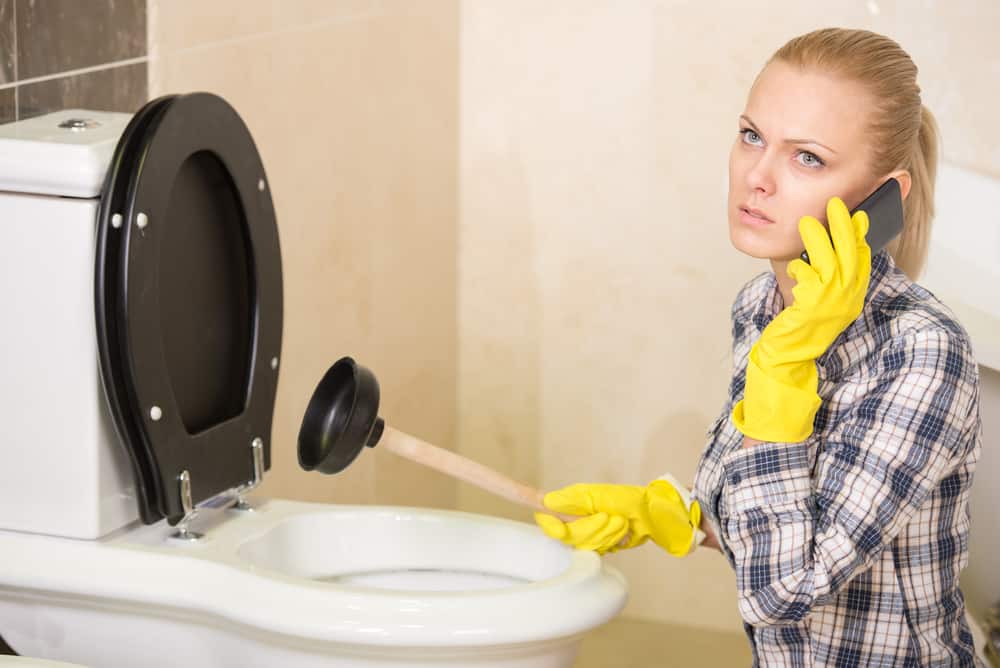But many of us don’t consider how often toilets need to be maintained.
You are not alone in wondering when is the right frequency to flush an unused toilet.
So, How Often Should You Flush An Unused Toilet?
All toilets must be flushed at least once per week. The idea is to ensure proper sanitation and prevent odors and potential blockages.
This article will explore why flushing an unused toilet is crucial and the potential risks of not flushing it regularly.
We will also provide tips on maintaining an unused toilet, including cleaning and preventing buildup.
Four Things Will Happen If You Do Not Flush An Unused Toilet Frequently
1. Foul Odors Will Develop In The Toilet
One of the most obvious consequences of not flushing an unused toilet is unpleasant odors.
If your toilet is not flushed, waste and bacteria build up in the bowl and create an unpleasant smell.
It is particularly noticeable in a bathroom that is not used frequently. The same can happen to your toilet if you flush it infrequently.
2. It May Clog
Clogs can be a serious menace to toilets and pipes.
Clogs, consisting of waste and debris, are often challenging to remove.
Unclogging toilets and pipes is one of the most expensive repairs you can ever do in the home.
3. Bacteria And Mold Growth
An unused toilet that is not flushed regularly becomes a breeding ground for bacteria and mold. Mold and bacteria thrive in a damp environment.
Mold releases spores that are allergic to people with breathing complications.
4. Plumbing Issues
Plumbing issues will occur due to clogging of the pipes. Waste and debris build up in the pipes and block them.
Pipes that get often blocked leak. This can be costly to repair and cause water damage to your home.
Five Factors Affecting the Frequency of Flushing
1. Water Pressure
If your home has low water pressure, flushing an unused toilet more frequently can help prevent the buildup of waste and prevent odors.
On the other hand, if your home has high water pressure, you may need to flush less frequently.
2. Climate
The temperature and humidity of your area can affect the frequency of flushing. You should flush more frequently if you live in a hot and humid climate.
The idea is to prevent bacteria and mold growth. In colder climates, more than flushing is required.
3. Frequency Of Use
The frequency of flushing may also depend on the use of the toilet.
If it is located in a guest bathroom that is rarely used, it may not need to be flushed as often as in a used bathroom.
4. Plumbing
The age and condition of your plumbing can also affect flushing frequency.
If your plumbing is old or in poor condition, flushing more frequently can help prevent clogs and leaks.
5. Cleaning
Regular cleaning of the toilet can also affect the frequency of flushing.
If the toilet is cleaned regularly, it may not need to be flushed as often as a toilet that is not cleaned as frequently.
Five Tips for Maintaining an Unused Toilet
1. Flush Regularly
As we mentioned before, flushing an unused toilet regularly is one of the most important things you can do to maintain it.
It’s generally recommended to flush at least once a week to prevent the buildup of waste and bacteria.
2. Clean The Bowl
It would help if you cleaned the unused toilet to prevent odors and the growth of bacteria and mold.
It is best to use a toilet bowl cleaner to clean the bowl. Be sure to scrub under the rim and in the jet holes.
The idea is to clear off the potential development of bacteria and molds in these areas.
3. Disinfect The Toilet
You can use a wide array of methods to disinfect an unused toilet.
Use a disinfectant spray or wipes to clean the toilet. Pay special attention to the handle, seat, and lid.
4. Check For Leaks
If an unused toilet has developed leaks anywhere, there is every chance that it is causing a horrible odor all over the place.
A leak can also lead to damage to the toilet itself.
Worse still, it can jeopardize the entire building. Not to mention the high water bills that it will cause.
5. Call A Plumber
If you notice any issues with your unused toilet, such as clogs, leaks, or water damage, it’s best to call a plumber for professional assistance.
Final Words
Flushing an unused toilet regularly can help prevent odors, clogs, and the growth of bacteria and mold.
As discussed in this article, the flushing frequency can vary depending on several factors.
It’s generally recommended to flush at least once a week for an unused toilet to maintain proper sanitation.
You want to ensure that the toilet is safe and does not compromise the conditions of the house.

